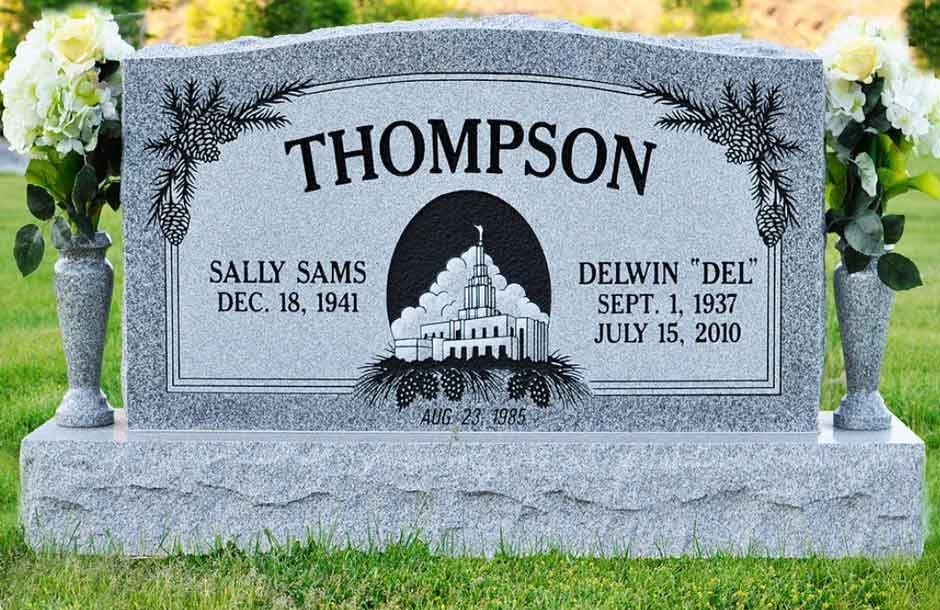Creating a lasting memorial for a loved one is a deeply personal and meaningful task. Custom headstones serve as a tribute to the life and legacy of the departed, reflecting their personality, interests, and the impact they had on the world. Designing the perfect custom headstone involves careful consideration of various elements, from material and shape to inscriptions and symbols. In this blog, we’ll explore the key steps and considerations to help you design a headstone that honors your loved one beautifully and appropriately.
Understanding Custom Headstones
Custom headstones are personalized memorials that differ from standard headstones in their design, inscriptions, and additional features. They provide a unique way to commemorate a person’s life, allowing for creative expressions that capture the individual’s essence. When designing a custom headstone, it’s essential to balance personal preferences with cemetery regulations and practical considerations.
Step-by-Step Guide to Designing a Custom Headstone
Step 1: Choosing the Right Material
The first step in designing a custom headstone is selecting the appropriate material. The most common materials used for headstones include:
- Granite: Durable and available in a variety of colors, granite is a popular choice for headstones. Its hardness makes it resistant to weathering, ensuring the headstone remains intact for decades.
- Marble: Known for its classic and elegant appearance, marble is softer than granite and can be more susceptible to weathering. However, its unique veining makes it a beautiful choice.
- Bronze: Often used in combination with granite bases, bronze plaques offer a distinctive look and are highly durable. Bronze headstones can develop a patina over time, adding character.
- Sandstone and Limestone: These materials offer a rustic and natural appearance but are less durable compared to granite and bronze. They are best suited for regions with milder climates.
Step 2: Selecting the Shape and Size
Custom headstones come in various shapes and sizes. The most common styles include:
- Upright Headstones: Traditional and often the most recognizable, these headstones stand vertically and offer ample space for inscriptions and designs.
- Flat Headstones: Also known as grave markers, these lie flat on the ground. They can be simpler in design but are equally customizable.
- Kerbed Headstones: These cover the entire grave and can include additional elements such as vases, statues, or carvings.
- Desk Tablets and Plaques: These are smaller and often used for specific sections of a cemetery. They provide a more modest tribute.
When choosing the size and shape, consider the cemetery’s regulations, as they often have specific requirements regarding dimensions and styles.
Step 3: Personalizing the Inscription
The inscription is a crucial element of a custom headstone, serving as the primary means of conveying the deceased’s identity and legacy. Here are some tips for crafting a meaningful inscription:
- Basic Information: Include the full name, date of birth, and date of death. These are essential details that every headstone should have.
- Epitaph: A short, poignant phrase or sentence that captures the essence of the deceased. Common epitaphs include expressions of love, faith, or a summary of the individual’s life philosophy.
- Quotations and Poems: Consider including a favorite quote, verse, or poem that was meaningful to the deceased or reflects their life.
- Personal Messages: Add a personalized message from the family or a special nickname used by loved ones.
Step 4: Adding Symbols and Imagery
Symbols and imagery can enhance the personalization of a custom headstone, adding layers of meaning and tribute. Common symbols and their meanings include:
- Religious Symbols: Crosses, angels, and other religious icons represent faith and spirituality.
- Floral Designs: Flowers like roses, lilies, and daisies symbolize love, purity, and remembrance.
- Animals: Birds, butterflies, and other animals can represent freedom, transformation, and peace.
- Hobbies and Interests: Include symbols that reflect the deceased’s passions, such as musical notes for a music lover, sports equipment for an athlete, or a book for an avid reader.
Step 5: Choosing the Finishing Touches
The finishing touches on a custom headstone can make a significant difference in its overall appearance. Consider the following options:
- Polished vs. Unpolished: A polished finish provides a smooth, reflective surface, while an unpolished or rustic finish gives a more natural look.
- Engraving Techniques: Traditional engraving, laser etching, and hand-carving are different techniques that offer varying levels of detail and texture.
- Paint and Gilding: Adding color or gold leaf to the inscriptions and symbols can enhance visibility and aesthetic appeal.
- Lighting: Solar-powered lights or built-in illumination can highlight the headstone during the night, ensuring it remains a visible and comforting presence.
Step 6: Considering Long-Term Maintenance
When designing a custom headstone, it’s important to consider its long-term maintenance. Some materials and finishes require more upkeep than others. Granite and bronze are relatively low maintenance, while marble and softer stones may need regular cleaning and protection from weather elements.
Step 7: Working with a Professional
Designing a custom headstone is a significant undertaking that can benefit from professional expertise. Working with a reputable memorial company or stone mason ensures that your vision is accurately realized. Professionals can provide valuable insights into material durability, design feasibility, and cemetery regulations.
Step 8: Navigating Cemetery Regulations
Every cemetery has its own set of rules and regulations regarding headstone design, materials, and installation. It’s crucial to review these guidelines before finalizing your design to ensure compliance. Cemetery regulations may dictate the allowed sizes, shapes, materials, and even the types of inscriptions and symbols.
Step 9: Budgeting for Your Custom Headstone
Custom headstones can vary significantly in price based on factors such as material, size, design complexity, and additional features. Establish a budget early in the process and communicate it with your chosen memorial company to ensure the design stays within your financial means.
Step 10: Reflecting on the Life and Legacy
Ultimately, the most important aspect of designing a custom headstone is that it reflects the life and legacy of your loved one. Take the time to gather input from family and friends, and consider the deceased’s personality, values, and interests. A well-designed headstone should evoke memories and emotions, serving as a fitting tribute to a life well-lived.
Tips for Designing a Custom Headstone
- Start Early: Give yourself ample time to design the headstone, especially if you want to incorporate detailed elements or special materials.
- Seek Inspiration: Look at other custom headstones for inspiration, but make sure the final design is unique and personal.
- Involve Loved Ones: Include family and friends in the design process to gather diverse perspectives and ideas.
- Prioritize Durability: Choose materials and finishes that will withstand the test of time and require minimal maintenance.
- Think Ahead: Consider how the headstone will age and whether additional space is needed for future inscriptions or updates.
Conclusion
Designing the perfect custom headstone is a heartfelt endeavor that requires thoughtful consideration and creativity. By carefully selecting the material, shape, inscriptions, and symbols, you can create a lasting tribute that honors your loved one’s memory in a meaningful way. Remember to navigate cemetery regulations, work with professionals, and reflect on the individual’s life and legacy throughout the process. A well-designed custom headstone not only commemorates a life but also provides a place of comfort and reflection for family and friends for generations to come.







